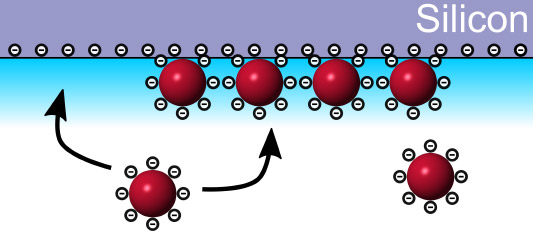 Back to Open Positions & Projects
Back to Open Positions & Projects

Assembly of MoS2 Quantum Dots into Thin Films
- Supervisor: Peter Schall
- Project Type: Bachelor / Master Project
- Goal: To explore the method of deposition by critical Casimir forces on MoS2 quantum dots to fabricate few-layer films of MoS2
- Info: Send an email to: P. Schall
In recent years, few-layered transition metal dichalcogenides have shown a rise in popularity due to their interesting optical properties, such as high exciton-binding energies, rich electronic structure and relatively strong optical response. However, their applications have been limited by the difficulty of synthesizing high-quality samples on a large area, hindering their use in photovoltaics for example. To date epitaxial techniques such as chemical vapor deposition (CVD) provide the samples of highest quality but this technique is time-consuming and still not very scalable. In the field of nanocrystal quantum dots, self-assembly techniques have been used to synthesize novel superstructures. One of these techniques, deposition by critical Casimir forces has been used to mimic the epitaxial growth of thin films starting from nanocrystals in solution, requiring narrow size-distributions of the starting nanocrystals. The picture above sketches the idea: Deposition of quantum dots on a substrate is achieved by critical Casimir forces via small temperature variations.
In this work we explore the method of deposition by critical Casimir forces on MoS2 quantum dots to fabricate few-layer films of MoS2 and follow the evolution of its optical properties from a 3D confined system to a 2D confined system and compare the final product to MoS2 of similar thickness produced by the more traditional techniques of CVD and atomic layer deposition (ALD).
You will start in the chemistry lab with the starting nanocrystals and do some initial size-selection steps by centrifugation. Using a pre-existing setup you can deposit the particles in layers after which both imaging and optical characterization techniques will be used in our optics lab to characterize the samples and further optimize the procedure.
